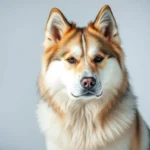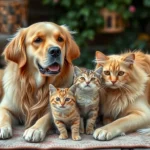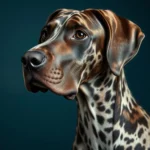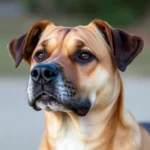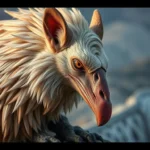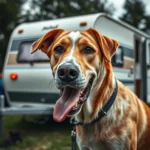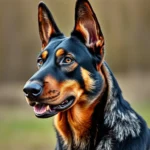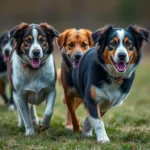
Introduction
Dog breeds play a significant role in our lives, serving various purposes from companionship to assistance in work and sports. Among the myriad of breeds, the Large Munsterlander stands out as a unique and versatile canine companion. This breed, known for its striking appearance and affectionate nature, has a rich history and distinct characteristics that make it a favorite among dog lovers.
The Large Munsterlander is a gundog that originated in Germany, primarily known for its exceptional hunting skills and strong bond with its human companions. With a balanced physique and a friendly demeanor, this breed is not only suitable for hunting but also makes an excellent family pet. Let’s delve deeper into the world of the Large Munsterlander, exploring its history, traits, care needs, and much more.
Overview of Dog Breeds
Importance of Dog Breeds
Dog breeds have evolved over thousands of years to fulfill specific roles in human society. They are not just pets; they can be companions, workers, and participants in various sports. Each breed has its unique set of traits and behaviors, making it essential to choose the right breed based on one’s lifestyle and preferences.
Classification of Dog Breeds
Dog breeds are generally classified into groups based on their characteristics and purposes. Here are a few major classifications:
- Sporting Group: Breeds like retrievers and spaniels, known for their hunting abilities.
- Working Group: Breeds such as Siberian Huskies and Boxers, valued for their strength and intelligence.
- Herding Group: Breeds like the Border Collie, recognized for their herding instincts.
- Hound Group: Breeds known for their tracking skills, including Beagles and Bloodhounds.
Factors influencing these classifications include size, temperament, and the specific skills a breed possesses. Understanding these distinctions is crucial for potential dog owners.
The Large Munsterlander: A Detailed Profile
History and Origin
The Large Munsterlander traces its roots back to Germany, where it was developed in the early 20th century as a versatile hunting dog. This breed was bred to assist hunters in retrieving game from both land and water, showcasing its adaptability and intelligence. The Large Munsterlander is recognized as a distinct breed from its smaller counterpart, the Small Munsterlander, though both share similar traits.
Historically, the breed’s development focused on creating a dog that could handle various terrains and conditions, making it a reliable partner in the field. Today, the Large Munsterlander is not only celebrated for its hunting prowess but also cherished as a loyal family companion.
Physical Characteristics
The Large Munsterlander is a medium to large-sized dog with a well-proportioned body. Here are some key physical traits:
- Size: Males typically weigh between 60-80 pounds, while females range from 50-70 pounds.
- Height: They stand about 25-27 inches tall at the shoulder.
- Coat: The breed has a long, dense, and water-resistant coat, primarily in shades of black and white or liver and white.
- Distinctive Features: They have long, floppy ears, a feathered tail, and expressive eyes that exude intelligence and friendliness.
These physical traits not only contribute to the breed’s beauty but also enhance its abilities as a hunting dog.
Temperament and Personality
The Large Munsterlander is known for its friendly and loyal personality. Here are some key temperament traits:
- Affectionate: They are known to form strong bonds with their families and thrive on companionship.
- Intelligent: This breed is quick to learn and responds well to training, making it suitable for various activities.
- Energetic: The Large Munsterlander requires regular exercise to maintain its physical and mental health.
- Good with Children: Their gentle nature makes them excellent companions for families with kids.
Overall, the Large Munsterlander is adaptable, making it suitable for singles, families, and active individuals alike.
Health and Care of the Large Munsterlander
Common Health Issues
Like all breeds, the Large Munsterlander may be predisposed to certain health issues. Common ailments include:
- Hip dysplasia
- Elbow dysplasia
- Eye disorders (such as cataracts)
- Ear infections due to their floppy ears
Regular veterinary check-ups are essential to detect and address these issues early, ensuring your dog’s long-term health.
Nutrition
Proper nutrition is crucial for the well-being of the Large Munsterlander. Here are some dietary recommendations:
- High-Quality Dog Food: Opt for a balanced diet that meets the breed’s nutritional needs, ideally formulated for active dogs.
- Portion Control: Monitor food portions to prevent obesity, especially since this breed is prone to weight gain.
- Hydration: Ensure your dog has access to fresh water at all times.
Consulting with a veterinarian can help tailor a diet plan specific to your dog’s age, weight, and activity level.
Exercise Requirements
The Large Munsterlander is an active breed that requires ample exercise. Here are some guidelines:
- Daily Activity: Aim for at least 60-90 minutes of exercise daily, including walks, runs, and playtime.
- Variety: Engage them in different activities such as fetch, swimming, and agility training to keep them mentally stimulated.
- Socialization: Regular interaction with other dogs and people is essential for a well-adjusted temperament.
Meeting these exercise needs is vital for their physical health and emotional well-being.
Grooming and Maintenance
Grooming the Large Munsterlander is relatively straightforward. Here’s what to keep in mind:
- Brushing: Brush their coat at least once a week to remove loose hair and prevent matting.
- Bathing: Bathe them as needed, typically every few months or when they get dirty.
- Ear Care: Regularly check and clean their ears to prevent infections.
- Dental Hygiene: Brush their teeth regularly to maintain oral health.
Establishing a grooming routine early on will help your dog become accustomed to the process.
Training the Large Munsterlander
Basic Training Techniques
Training is essential for the Large Munsterlander. Here are some tips:
- Early Socialization: Expose your puppy to various environments, people, and other animals to promote confidence and good behavior.
- Positive Reinforcement: Use treats and praise to reward desired behaviors, making training a positive experience.
- Consistency: Be consistent with commands and rules to help your dog understand expectations.
A well-trained Large Munsterlander is a joy to have and contributes positively to family dynamics.
Advanced Training and Activities
The Large Munsterlander excels in various activities beyond basic obedience. Consider these options:
- Agility Training: Their agility and intelligence make them excellent candidates for agility courses.
- Hunting and Retrieving: Given their history, they thrive in hunting and retrieving tasks, which can be a rewarding experience for both dog and owner.
- Obedience Courses: Enroll in obedience classes to enhance training and strengthen the bond with your dog.
These activities not only provide physical exercise but also mental stimulation, which is crucial for this intelligent breed.
Common Behavioral Issues
Like all dogs, the Large Munsterlander may exhibit behavioral issues if not properly trained. Here are some common problems and solutions:
- Separation Anxiety: This breed thrives on companionship. Gradually acclimate them to being alone to minimize anxiety.
- Hyperactivity: Ensure they receive adequate exercise to channel their energy positively.
- Barking: This breed may bark to communicate. Training can help manage excessive barking.
Early identification and training can help mitigate these issues, resulting in a well-behaved pet.
Living with a Large Munsterlander
Ideal Living Conditions
The Large Munsterlander adapts well to various living conditions, but certain environments are more suitable:
- Space Requirements: They thrive in homes with ample space. A house with a yard is ideal, but they can adapt to apartment living if provided with sufficient exercise.
- Climate Considerations: This breed is generally adaptable but may prefer moderate climates due to its dense coat.
Creating a comfortable living environment will contribute to your dog’s overall happiness.
Family Dynamics
The Large Munsterlander fits well into various family structures. Here’s how they interact:
- With Children: They are generally gentle and patient, making them great companions for kids.
- With Other Pets: Their friendly nature usually allows them to get along well with other dogs and pets, especially if socialized early.
- With the Elderly: They can be a wonderful companion for older adults, providing affection and companionship without being overly demanding.
Their adaptability and friendly demeanor make them a great addition to many households.
Traveling with a Large Munsterlander
Traveling with your Large Munsterlander can be enjoyable with the right preparation. Here are some tips:
- Safety First: Use a proper harness or crate to keep your dog safe while traveling.
- Frequent Breaks: Plan for regular breaks during long trips to allow your dog to stretch and relieve itself.
- Pet-Friendly Accommodations: Research pet-friendly hotels and accommodations to ensure a comfortable stay for both you and your dog.
Being well-prepared makes traveling with your Large Munsterlander a positive experience.
Conclusion
The Large Munsterlander is a remarkable breed known for its intelligence, loyalty, and versatility. With proper care, training, and socialization, this breed can thrive in various environments, making it a wonderful companion for families, singles, and active individuals alike.
As you consider adding a dog to your life, the Large Munsterlander offers a unique combination of traits that can enrich your daily experiences. Embrace the joy and companionship this breed provides, and you might find that the Large Munsterlander is the perfect fit for your home.
FAQs about the Large Munsterlander
What is the lifespan of a Large Munsterlander?
The average lifespan of a Large Munsterlander is around 12-14 years, depending on genetics and health care.
Are Large Munsterlanders good with children?
Yes, Large Munsterlanders are known for their gentle and affectionate nature, making them great companions for children.
How much exercise does a Large Munsterlander need?
This breed requires at least 60-90 minutes of exercise daily to stay healthy and happy.
Do Large Munsterlanders have any special grooming needs?
They require regular brushing, ear cleaning, and dental care to maintain their health and appearance.
Can Large Munsterlanders be left alone?
While they can adapt to some alone time, they thrive on companionship. Gradual training can help them manage separation anxiety.
Understanding the Large Munsterlander will help you appreciate this breed’s unique qualities and care requirements, making it easier to provide a loving and supportive home for your new furry friend.
